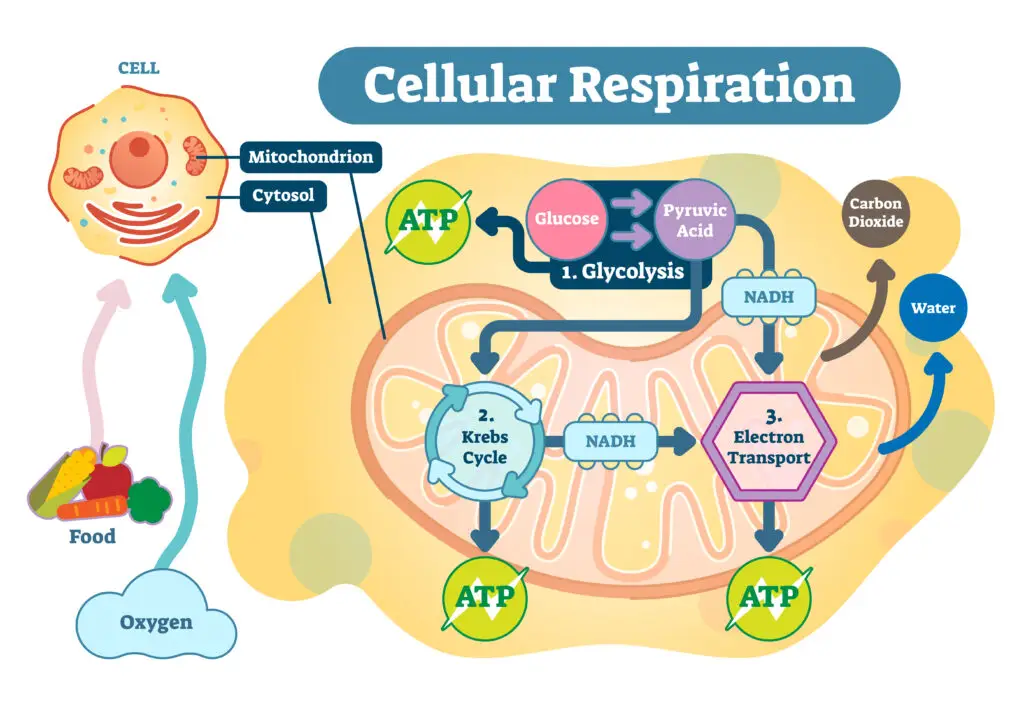Cellular Respiration
Definition of Cellular Respiration
Cellular respiration is the process by which cells within an organism convert glucose and oxygen into energy, water, and carbon dioxide. This energy is essential for cells to perform various functions that sustain life.
Stages of Cellular Respiration
The stages of cellular respiration are the steps cells use to turn food into energy. This energy powers the cell and lets it do all the work needed to keep the body going. The process happens in three main steps.
First, glycolysis begins breaking down sugar into smaller parts. This step takes place in the cell’s cytoplasm and produces a little bit of energy.
Next, in the Krebs cycle (or citric acid cycle), the sugar parts move into the mitochondria. Here, they get broken down even more, releasing carbon dioxide as waste and producing more energy.
Finally, the electron transport chain is where most of the energy is made. This step also happens in the mitochondria. Oxygen plays a big role here, helping create a large amount of energy and producing water as a byproduct.
Together, these steps make sure the cell has the energy it needs to function properly.
Aerobic vs. Anaerobic
Aerobic and anaerobic cellular respiration are two ways cells turn food into energy, but they work differently based on oxygen use.
In aerobic respiration, cells need oxygen to create energy. This process is very efficient, producing a lot of energy, along with water and carbon dioxide as waste. It happens during activities where you breathe normally, like walking or jogging.
On the other hand, anaerobic respiration doesn’t require oxygen. Cells switch to this method when there isn’t enough oxygen available, like during intense exercise or in certain bacteria. Although it produces less energy than aerobic respiration, it can still keep the cells going for a short time. Anaerobic respiration also creates lactic acid, which can make your muscles feel sore after heavy activity.
So, aerobic respiration uses oxygen and makes a lot of energy, while anaerobic doesn’t need oxygen but makes less energy and produces lactic acid. Both are important ways for cells to get the energy they need.
